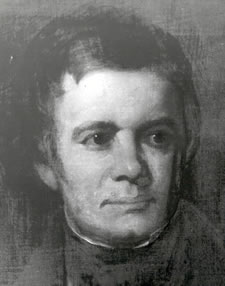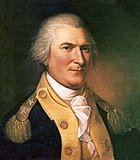
Milton Jerrold Shapp was an American businessman and politician who served as the 40th governor of Pennsylvania from 1971 to 1979 and the first Jewish governor of Pennsylvania. He was also the first governor of Pennsylvania to be eligible for, and re-elected to, consecutive four-year terms per the 1968 Pennsylvania Constitution.
The Supreme Executive Council of the Commonwealth of Pennsylvania was the collective directorial executive branch of the Pennsylvanian state government between 1777 and 1790. It was headed by a president and a vice president. The best-known member of the Council was Benjamin Franklin, who also served as its sixth president.
The Pennsylvania Republican Party (PAGOP) is the affiliate of the Republican Party in the U.S. state of Pennsylvania, headquartered in Harrisburg. The party is led by Lawrence Tabas, who has served as state chairman since 2019. It is the second largest political party in the state behind the Pennsylvania Democratic Party.

The lieutenant governor is a constitutional officer of the Commonwealth of Pennsylvania. The lieutenant governor is elected for a four-year term in the same year as the governor. Each party picks a candidate for lieutenant governor independently of the gubernatorial primary. The winners of the party primaries are then teamed together as a single ticket for the fall general election. The lieutenant governor presides in the Pennsylvania State Senate and is first in the line of succession to the governor; in the event the governor dies, resigns, or otherwise leaves office, the lieutenant governor becomes governor. The lieutenant governor casts tie breaking votes in the state senate.

The 2002 Pennsylvania gubernatorial election was held on November 5, 2002, to elect the Governor and Lieutenant Governor of Pennsylvania. Incumbent Republican governor Mark Schweiker, who took office in 2001 when Tom Ridge resigned to become Homeland Security Advisor, was eligible to run for a full term, but did not do so. Democrat Ed Rendell, the former mayor of Philadelphia and Chairman of the Democratic National Committee, emerged from a competitive primary to win the general election against Republican Pennsylvania Attorney General Mike Fisher.

The Pennsylvania lieutenant gubernatorial election of 2010 was held on November 2, 2010. The winning candidates for Governor and Lieutenant Governor will serve a four-year term from 2011 to 2015. In Pennsylvania, the Lieutenant Governor is elected on the same ticket as the Governor, so the only campaign for this office was the primary election. As a result of Tom Corbett's election to the position of governor, Jim Cawley became the new Lieutenant Governor.

The 1860 Pennsylvania gubernatorial was held on October 9, almost one month before Presidential election. Andrew Curtin of the newly formed Republican Party won the governor's mansion over Democrat Henry Donnel Foster.

The 1838 Pennsylvania gubernatorial election was a statewide contest for the office of Governor of the Commonwealth of Pennsylvania in the United States.

The Pennsylvania lieutenant gubernatorial election of 2002 was held on November 5, 2002. In Pennsylvania, the Lieutenant Governor is elected on the same ticket as the Governor, so the only campaign for this office was the primary election.

The 1811 Pennsylvania gubernatorial election occurred on October 8, 1811. Incumbent Democratic-Republican governor Simon Snyder won re-election over Federalist candidate William Tilghman, the Chief Justice of the Pennsylvania Supreme Court, by a wide margin. Two of the major policy goals on which Snyder campaigned were increasing spending for infrastructural upgrades and authorizing the transfer of governmental operations from Lancaster to Harrisburg.

The 1796 Pennsylvania gubernatorial election occurred on October 11, 1796. Incumbent Democratic-Republican governor Thomas Mifflin successfully sought re-election to a third term. For the second consecutive election, he was victorious over U.S. Representative Frederick Muhlenberg, the Federalist candidate, by a wide margin.

The 1793 Pennsylvania gubernatorial election occurred on October 8, 1793. Incumbent Democratic-Republican governor Thomas Mifflin sought re-election to another term, defeating Federalist candidate and U.S. Representative Frederick Muhlenberg. Muhlenberg won only two counties: York and Bedford. However, Mifflin's 2-1 vote margin was down from his 10-1 victory margin in the 1790 gubernatorial election.

The 1863 Pennsylvania gubernatorial election occurred on October 13, 1863. Incumbent governor Andrew Gregg Curtin, a Republican, was a candidate for re-election. Curtin defeated Democratic candidate George Washington Woodward to win another term.

The 1872 Pennsylvania gubernatorial election occurred on October 8, 1872. Incumbent governor John W. Geary, a Republican, was not a candidate for re-election.

The 1875 Pennsylvania gubernatorial election occurred on November 2, 1875. Incumbent governor John F. Hartranft, a Republican, was a candidate for re-election. Hartranft defeated Democratic candidate Cyrus L. Pershing to win another term.

The 1807 New Hampshire gubernatorial election was held on March 10, 1807.

The 1806 New Hampshire gubernatorial election was held on March 11, 1806.

















